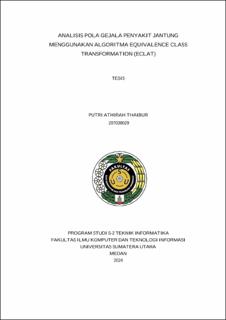| dc.description.abstract | Heart Disease remains the leading cause of death, so much so that almost the
entire world is estimated to be caused by heart-related conditions. The World Health Organization (WHO) has expressed concern about the alarming rise in the latter, which is now equivalent to the risk of heart disease in non-smokers. Data
mining techniques, such as extracting and identifying patterns from big data, offer
promising solutions. One such technique involves discovering combinations of
itemsets that frequently appear in data. In this study, the authors propose to use the Eclat Association Rule Algorithm, a method to simplify the pattern discovery process. Association Rule is a powerful tool that uncovers the hidden relationships between these data points, not only discovering new relationships but also
statistically validating existing ones. By uncovering these relationships, Association Rule can provide deeper insights that ultimately pave the way for better prevention strategies. The analysis showed that men are at higher risk of
heart disease than women. The presence of cholesterols is the most common symptom found in patients with heart disease. Chest pain is also one of the most frequent attributes found in many rules, as chest pain itself is known to be mostly associated with heart disease. | en_US |


